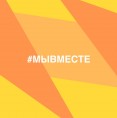- The exhibition “Every word is a shell” opened
- To selflessly defend the Motherland: to the 100th anniversary of the birth of General V. I. Demidov
- In the Museum opened the exhibition “Politics and music”
- In the Museum opened the exhibition “Donbass 14-22. The Right for Life”
- The museum held a lecture on the 150th anniversary of Matilda Kshesinskaya
- Museum opened the exhibition “The sketch of an epoch”
- The exhibition “Street Children. Waifs of the 1920s” opened at the museum
- The exhibition “The experiment that changed the world” opened on November 7
- An exhibition «Without the Right to Glory, for the Glory of the State» opened at the museum’s branch
- The award ceremony for the «Human Rights 2022» contest was held on December 9
- The exhibition «Always be ready» opened
- Museum hosted the conference on 100th anniversary of illegal intelligence
- The exhibition “The Word Belongs to the President of the Council of Ministers!”
- The exhibition “The Petrograd Process”
- The exhibition “Who are you, Alexandra Kollontai?” opened
- The exhibition “The Folk Talent Factory” opened
In the Museum opened the exhibition “Politics and music”
Artists` awards and concert posters, samizdat (self-publishing of the books those were under censorship) and magnitizdat (tape-recorded publishing of music that was not available in the USSR), records and musical instruments, personal belongings and documents of musical figures - from Shostakovich to Mikhail “Gorshok” Gorsheniov. Visitors will hear front-line songs, melodies from the Thaw era, bard and rock music, and can try to play the thermo-vox themselves.
“Music has always reflected what was happening in society - the birth and fall of civilizations, revolutions and other social disruptions,” said first deputy director of the museum for scientific work Elena Lysenko at the opening of the exhibition. - At the same time, music has created its own language that speaks directly to the individual. Use the language of music to unite society for political purposes became possible in the XX century. Our exhibition is devoted to this period.
“At the exhibition we have managed to show the evolution of Soviet society - from the Bolshevik dictatorship to the nation-state in the 1980s, and the role of musical art in this process,” said Alexander Smirnov, head of the exhibition's author group.
At the opening, musicians: Pyotr Termen, composer and performer on the thermo-vox, great-grandson of the inventor of the thermo-vox Lev Termen, and Sergey Parashchuk, leader of the band “NEP”, performed.
In the framework of the Year of Folk Art and Non-material Cultural Heritage of the Peoples of Russia.
Co-organizers of the exhibition: the State Archive of the Russian Federation, the Russian State Archive of Contemporary History, the Russian State Archive of Social and Political History.
Participants of the exhibition: Officers' House of Western Military District, State Museum of the History of Saint-Petersburg; Folk Museum “And muses were not silent...” of the secondary school № 235 named after D. D. Shostakovich; Russian State Military Archive; Russian State Archive of Literature and Art; Saint-Petersburg State Museum of Theater and Music Art; Central State Archive of Historical and Political Documents of Saint-Petersburg; Central State Archive of Literature and Art of St. Petersburg; Central State Archive of Saint-Petersburg; Central Archive of FSB of Russia.
The Museum is grateful for the materials provided by the Museum of the History of Children's Movement of the Moscow Palace of Pioneers, Vorobyovy Gory, the State Budgetary Educational Institution “Saint-Petersburg City Palace of Youth Creativity”, as well as the first president of the Leningrad Rock-club G.B. Zaitsev, collector V.L. Kokin, musician I.E. Mosin, collector U.K. Khaziev.
“Music has always reflected what was happening in society - the birth and fall of civilizations, revolutions and other social disruptions,” said first deputy director of the museum for scientific work Elena Lysenko at the opening of the exhibition. - At the same time, music has created its own language that speaks directly to the individual. Use the language of music to unite society for political purposes became possible in the XX century. Our exhibition is devoted to this period.
“At the exhibition we have managed to show the evolution of Soviet society - from the Bolshevik dictatorship to the nation-state in the 1980s, and the role of musical art in this process,” said Alexander Smirnov, head of the exhibition's author group.
At the opening, musicians: Pyotr Termen, composer and performer on the thermo-vox, great-grandson of the inventor of the thermo-vox Lev Termen, and Sergey Parashchuk, leader of the band “NEP”, performed.
In the framework of the Year of Folk Art and Non-material Cultural Heritage of the Peoples of Russia.
Co-organizers of the exhibition: the State Archive of the Russian Federation, the Russian State Archive of Contemporary History, the Russian State Archive of Social and Political History.
Participants of the exhibition: Officers' House of Western Military District, State Museum of the History of Saint-Petersburg; Folk Museum “And muses were not silent...” of the secondary school № 235 named after D. D. Shostakovich; Russian State Military Archive; Russian State Archive of Literature and Art; Saint-Petersburg State Museum of Theater and Music Art; Central State Archive of Historical and Political Documents of Saint-Petersburg; Central State Archive of Literature and Art of St. Petersburg; Central State Archive of Saint-Petersburg; Central Archive of FSB of Russia.
The Museum is grateful for the materials provided by the Museum of the History of Children's Movement of the Moscow Palace of Pioneers, Vorobyovy Gory, the State Budgetary Educational Institution “Saint-Petersburg City Palace of Youth Creativity”, as well as the first president of the Leningrad Rock-club G.B. Zaitsev, collector V.L. Kokin, musician I.E. Mosin, collector U.K. Khaziev.
















